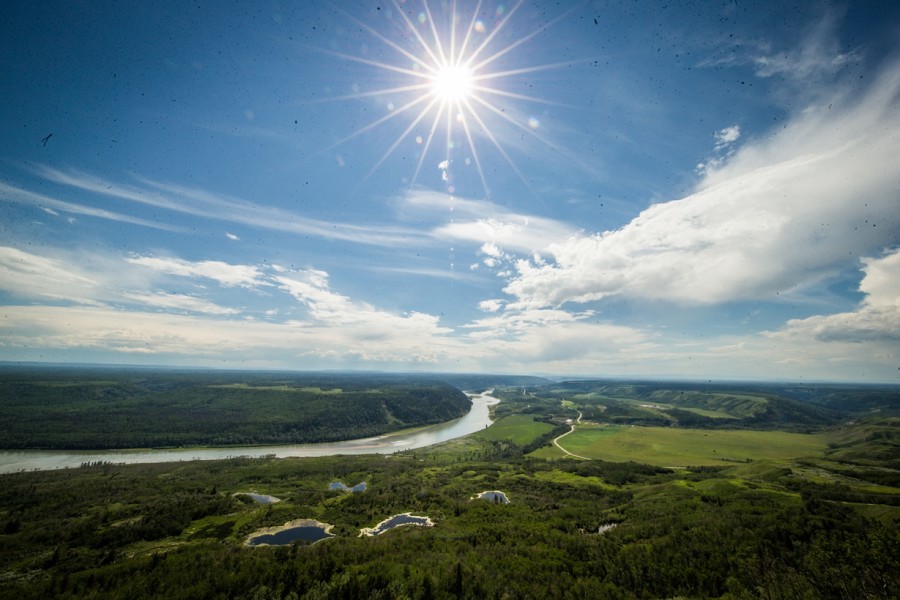
In northeastern British Columbia (B.C.), the mighty Peace River cuts across one of the narrowest sections of North America’s vast Rocky Mountain chain.
The unique ecology along this river system is featured most prominently in Peace-Boudreau, an area identified as special in 1969 and recommended for Provincial Park status in 1997, and appearing today on B.C. tourism maps as a star attraction. Yet it has not been formally protected despite years of campaigning by First Nations, local landowners, the Yellowstone to Yukon Conservation Initiative (Y2Y) and other conservation groups, as well as recommendations from independent scientists and land planners.
Despite its recognition of the region’s ecological value, the B.C. Government has pressed ahead on plans to build the Site C dam, a massive project that would flood much of the region—eradicating large sections of wildlife habitat, valuable farmland and a range of cultural artefacts left by First Nations’ communities that have existed in the region for millennia.
At more than 17,000 ac (7,000 ha), the Peace-Boudreau region hugs the river shoreline, encompassing tributary creeks, islands and aquatic features, such as the lower Moberly River and Boudreau Lake, and would protect high-quality habitat for a diversity of wildlife. The area provides high-value winter range as well as spring calving grounds on the islands for moose, deer and elk, and features a diverse range of wildlife, including grizzly bears, wolves, beaver and bull trout, and a plethora of bird species, such as osprey, eagles and trumpeter swans.
Peace-Boudreau was designed to protect the last remaining intact portion of the Peace River and conserve the Peace Lowlands, a critically underrepresented ecosystem in the province. Due to the heavy impact of oil and gas activity throughout northeastern B.C., protecting the ecological integrity of this region is vital—especially since it provides an invaluable linkage area for wide-ranging animals moving north and south along the mountainous Yellowstone to Yukon wildlife corridor. And yet, the Site C reservoir would flood up to 30 percent of these critical ecosystems.
Peace-Boudreau is a place of shared heritage, archaeological richness, First Nations cultural and economic importance and incredible wildlife habitat values combined together in a unique ecosystem that has been wisely reserved from destruction for almost 50 years.
Y2Y and partner organizations are working together to protect Peace-Boudreau forever. And that starts with a rejection of the Site C dam.
Written by Tim Burkhart, Peace River Break Coordinator at Yellowstone to Yukon Conservation Initiative

